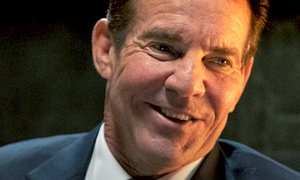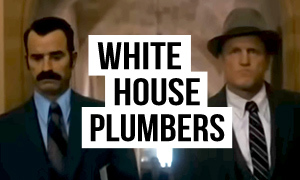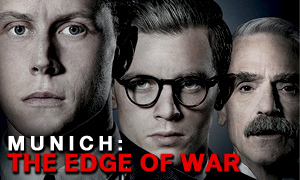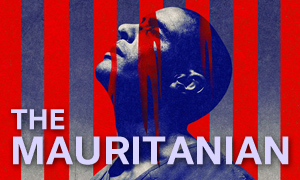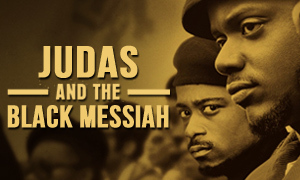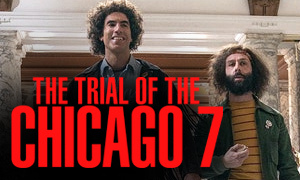Bridge of Spies: History vs. Hollywood
| REEL FACE: | REAL FACE: |
Tom Hanks
Born: July 9, 1956 Birthplace: Concord, California, USA | James B. Donovan
Born: February 29, 1916 Birthplace: The Bronx, New York, NY, USA Death: January 19, 1970, Brooklyn, New York, NY, USA (heart attack) |
Mark Rylance
Born: January 18, 1960 Birthplace: Ashford, Kent, England, UK | Rudolf Abel
Born: July 11, 1903 Birthplace: Benwell, Newcastle upon Tyne, UK Death: November 15, 1971, Moscow, Soviet Union (lung cancer) |
Austin Stowell
Born: December 24, 1984 Birthplace: Kensington, Connecticut, USA | Francis Gary Powers
Born: August 17, 1929 Birthplace: Jenkins, Kentucky, USA Death: August 1, 1977, Los Angeles County, California, USA (helicopter crash) |
Sebastian Koch
Born: May 31, 1962 Birthplace: Karlsruhe, Baden-Württemberg, Germany | Wolfgang Vogel
Born: October 30, 1925 Birthplace: Lower Silesia Death: August 21, 2008, Schliersee, Bavaria, Germany Pictured in 2003 |
Will Rogers
| Frederic L. Pryor
Born: April 23, 1933 |
What led to the capture of Soviet spy Rudolf Abel?
The Bridge of Spies true story reveals that it was Abel's assistant, Reino Häyhänen, who alerted U.S. authorities to Abel's espionage. After working as a spy in America for approximately ten years, Abel had become unhappy with his assistant over his drinking, arguing with his wife, and hiring of prostitutes. Abel complained to Moscow and Häyhänen was asked to return. Fearing that he would be punished or at worst executed, Häyhänen fled to the U.S. Embassy in Paris where he revealed his identity as a KGB agent and alerted U.S. officials to the whereabouts of Rudolf Abel, which eventually led to Abel's capture by the FBI on June 21, 1957. -It's History (YouTube)
Was James B. Donovan really hesitant to defend Rudolf Abel?
Yes. Like in the movie, the Federal Court put the decision of who would defend Rudolf Abel in the hands of the Brooklyn Bar Association, who in turn selected Brooklyn insurance lawyer James Donovan. Much like Hanks' character in the film, the real James Donovan did believe that everyone deserves a defense. "Our principles are engraved in the history and the law of this land," Donovan said in 1962. "If the free world is not faithful to its own moral code, there remains no society for which others may hunger" (The Milwaukee Journal). Donovan asked Abel for a fee of ten thousand dollars for the defense. He donated the entire sum to three universities (Strangers on a Bridge). Watch a newsreel that features James Donovan speaking about defending Rudolf Abel.
Why did the Brooklyn Bar Association select James Donovan to defend Rudolf Abel?
As stated in the Bridge of Spies movie, despite being a civilian for more than a decade, Donovan had experience from working at the Nuremberg war crime trials as an associate prosecutor on the personal staff of Supreme Court Justice Robert H. Jackson. His work at Nuremberg won him the Legion of Merit Medal and retirement as a Navy commander.
Prior to Nuremberg, the Bridge of Spies true story reveals that Donovan had left private practice in 1942 and held the position of associate general counsel of the United States Office of Scientific Research and Development, which oversaw the creation of the atomic bomb. He was then commissioned as a line ensign in the navy in 1943, where he served as general counsel of the Office of Strategic Services (OSS), the agency that dealt with sabotage, espionage and other covert matters. -The Milwaukee Journal
Was Donovan's wife upset that he was going to defend a spy?
Yes. James Donovan's wife Mary was not happy that he was going to defend the Soviet spy Rudolf Abel. "When I told my wife I'd been asked to defend a Red spy, she screamed" (The Milwaukee Journal). In Donovan's book Strangers on a Bridge, he says that his wife Mary also grew upset that he was giving more of his time to Rudolf Abel than his family.
Did James B. Donovan really urge the judge not to give Rudolf Abel the death penalty because Abel could be traded in the future?
Yes. On November 15, 1957, attorney James B. Donovan, who represented Soviet spy Rudolf Abel, urged Judge Mortimer W. Byers not to consider the death penalty for his client. In open court, Donovan told the judge, "It is possible that in the foreseeable future an American of equivalent rank will be captured by Soviet Russia or an ally; at such time an exchange of prisoners through diplomatic channels could be considered to be in the best national interests of the United States." Of course, this is exactly what happened approximately four years and three months later, when Abel was exchanged for downed U-2 pilot Francis Gary Powers at the Glienicker Bridge on February 10, 1962. The movie seems to significantly shorten the time between Abel's sentencing and the Powers-Abel exchange. -Strangers on a Bridge
As depicted in the movie, during Rudolf Abel's trial, Donovan had also argued that the government had violated Abel's Fourth Amendment rights by searching his home and seizing both Abel and all his property without a public search warrant or a criminal warrant of arrest.
Did someone really shoot out the windows of Donovan's home?
No. However, during his defense of Soviet spy Rudolf Abel, Donovan and his family did receive vindictive letters and threatening phone calls, to the point that he had to have the phone line switched to an unlisted number until the trial was over. Friends of his wife Mary made comments to her and asked her if her husband was "losing his mind." His children were subjected to comments from fellow classmates. "My father says your father defends Communists," an eight-year-old schoolmate told his daughter Mary Ellen. -Strangers on a Bridge
For how long was Rudolf Abel supposed to be in prison?
On November 15, 1957, Brooklyn judge Mortimer W. Byers sentenced Soviet spy Rudolf Abel to consecutive terms of 30, 10, and 5 years in prison and fined him $3,000. The case, which had made international headlines and turned James Donovan into a public pariah, faded into obscurity. It wasn't until May 1960, when the Russians shot down the U-2 spy plane piloted by Francis Gary Powers, that Abel's case, in particular Donovan's talk of spy exchanges, became relevant again. -Strangers on a Bridge
How long was U-2 pilot Francis Gary Powers held captive after he was shot down?
The American U-2 spy plane piloted by Francis Gary Powers was shot down on May 1, 1960. Powers was held captive by the Soviets until the February 10, 1962 Glienicke Bridge exchange arranged by James B. Donovan. The Soviet Union had originally sentenced Powers to ten years (three years confined to a prison followed by seven years of hard labor).
CIA pilot Francis Gary Powers had taken off from a military airbase in Peshawar, Pakistan on a mission to secretly photograph Russian military sites deep within Soviet airspace. His U-2 spy plane could reach altitudes in excess of 70,000 feet, which was thought to be too high for Soviet surface-to-air missiles or fighter planes. However, unbeknownst to the United States, the Russians had been improving the range of their missiles to combat the intrusion of spy planes in their airspace. One of the missiles exploded close enough to Powers' plane to break it apart and send it careening toward the ground. He was unable to engage the plane's self-destruct switch before ejecting from the cockpit and parachuting to the ground.
"Suddenly, there was a dull 'thump,'" Powers wrote in a memoir, "the aircraft jerked forward, and a tremendous orange flash lit the cockpit and the sky." -History.com
What were the details of the controversy surrounding the U-2 spy plane incident?
Believing that the CIA's spy plane had been destroyed and that its pilot, Francis Gary Powers, was most likely dead, the Eisenhower administration tried to cover up the incident by telling the press that the pilot of a weather plane had experienced oxygen difficulties and drifted off course. The State Department denied espionage, stating that there was no "deliberate attempt to violate Soviet air space and there never has been." The cover story was exposed when Soviet Premier Nikita Khrushchev eventually revealed that his country had recovered the wreckage of the plane and captured the pilot. Watch a newsreel highlighting the U-2 controversy. -History.com
How did James Donovan end up in charge of negotiating the Powers-Abel exchange?
According to the Bridge of Spies true story, Oliver Powers, the father of captured U-2 pilot Francis Gary Powers, wrote to Rudolf Abel telling him that he was going to ask the United States government to make an exchange. Abel's wife Elena wrote James Donovan to see if he could get her husband clemency (like in the film, Donovan was aware that some of the letters from Abel's wife were likely being written by the Soviet government). Donovan then contacted the Department of Justice. The fact that Donovan had defended Abel several years earlier also helped, including convincing the judge to spare Abel's life because he might some day be needed for an exchange. -The Milwaukee Journal
Did the real James B. Donovan really witness escapees being shot as they tried to scale the Berlin Wall?
No, but in his book Strangers on a Bridge, James B. Donovan does refer to such incidents, where escaping East Germans were shot by VOPOs (East German police) at the Berlin Wall. However, it doesn't appear that he ever witnessed such a shooting in person. He only speaks of seeing heavily armed East German guards at the wall, along with observation towers and machine-gun emplacements.
How long did the negotiations take?
The true story behind Bridge of Spies reveals that it took several months of negotiating before James Donovan was sent to meet face to face with the second secretary of the Soviet Embassy, Ivan Schischkin, in East Germany. During those months, Donovan worked with the Department of Justice to set up the prisoner exchange. -The Milwaukee Journal
Did Donovan tell his wife he was going to Berlin to negotiate the prisoner exchange?
No. He deliberately fooled his wife. Business trips to Europe were an almost yearly occurrence. He sent her a cable from London telling her he was heading to Scotland. Instead, he traveled to West Berlin where he stayed for ten days, crossing into East Germany regularly to discuss the terms of the exchange with Ivan Schischkin, the second secretary of the Soviet Embassy. Donovan did meet Abel's "daughter," his "wife," and his wife's "Cousin Drews" at the Soviet Consulate, and like in the film, he suspected they were impostors who the Soviets had brought in to butter him up.
Did James Donovan really cross through the Berlin Wall alone?
Yes. Originally he was supposed to be accompanied by an American Mission officer fluent in German and Russian, but the U.S. feared that if an American official was involved, it would be diplomatically embarrassing should something go wrong. Since Donovan was given no official status, there would be no embarrassment to the government. -Strangers on a Bridge
Did a gang of youths really steal Donovan's overcoat?
No. In his book Strangers on a Bridge, he does talk about nervously walking through a group of ten or twelve seemingly homeless East German youths with cigarettes dangling from their mouths. However, they did not steal his overcoat or give him any trouble. He also did not start with a cold in part due to not having his overcoat. The real James B. Donovan did develop a cold, but it was likely due to forgetting to turn the upstairs heat on in the place he was staying at in Berlin.
Is the Schischkin character that Donovan negotiates with based on a real person?
Yes. The Bridge of Spies true story reveals that the Ivan Schischkin character, who Donovan meets with when he crosses the Berlin Wall into East Germany, is indeed based on a real person. His full name is Ivan Alexandrovich Schischkin and he was the second secretary of the Soviet Embassy. As witnessed in the movie, the real James B. Donovan says that Schischkin spoke "impeccable" English. -Strangers on a Bridge
On what charges was American Student Frederic Pryor being held by the East Germans?
American economics student Frederic Pryor had been held by the East Germans on espionage charges. Prior to the Berlin Wall going up, the Yale student had been doing research for his doctorate on trade behind the Iron Curtain. When his research led him to obtain material that the East Germans deemed confidential, they arrested him and the prosecutor demanded the death penalty. The East Germans were hoping for a propaganda trial that would force the United States to publicly recognize the East German government, something that the U.S. had refused to do. -Strangers on a Bridge
When and where was the prisoner exchange made?
Like in the Bridge of Spies movie, the Americans and Soviets exchanged prisoners at Berlin's Glienicke Bridge and Checkpoint Charlie on the morning of February 10, 1962. First, college student Frederic L. Pryor was released to his parents at Checkpoint Charlie, the most well-known Cold War crossing point through the Berlin Wall that divided West Berlin and East Berlin.
Soviet spy Rudolf Abel was then swapped at Glienicke Bridge for downed American U-2 pilot Francis Gary Powers. The bridge links Berlin with Potsdam and was unique in that it was a place where the Soviet Union and the United States stood directly opposite one another. This made it an ideal place for prisoner exchanges. -Bridge of Spies book
Why was pilot Francis Gary Powers criticized following his release?
Many Americans thought that U-2 pilot Francis Gary Powers gave up information too easily to the KGB. Some even believed that he should have committed suicide instead of letting himself be captured. Like in the movie, he did carry a silver dollar in his pocket that hid a needle dipped in poison (the CIA official in the movie describes using it as "spending the dollar"). However, a CIA inquiry into the ordeal found that Powers had handled himself appropriately. The organization bestowed upon him its highest honor, the Intelligence Star for bravery. -History.com
Bridge of Spies Newsreels & Related Videos
Expand your knowledge of the Bridge of Spies true story by watching the newsreels and footage listed below that features the real lawyer James B. Donovan, Soviet spy Rudolf Abel, and coverage of the U-2 Spy Trial.
Link-to-Learn More:
